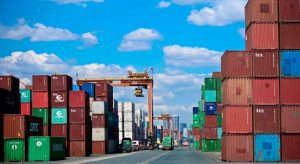UPS projects PHL trade with Asia tripling to $393B by 2030

PHILIPPINE TRADE with the rest of Asia is expected to triple by 2030 to $393 billion, logistics company UPS Philippines said.
Citing the results of a company study, UPS said expanded Philippine trade with 11 other Asian countries that it services will be driven by efforts to develop more domestic manufacturing.
“There are also significant opportunities for Filipino businesses in areas such as digitalization, building supply chain resilience and multilateral cooperation in international trade,” UPS said.
UPS said that retail, industrial manufacturing and automotive (IM&A), tech, and healthcare accounted for 75% of the Philippine’s intra-Asia trade in 2020, and is assuming the same segments will fuel growth until 2030.
In its study, UPS said that the IM&A segment will be the largest in value in 2030 as the country aims to be a global and a regional hub for automotive and electronics sectors.
It said tech could more than double in value by 2030, driven by significant demand for digitalization across Asia.
“Philippine-based businesses can plan for both headwinds and opportunities by diversifying supply chains into resilient trade routes and targeting high-value and high-growth trade routes, such as IM&A, healthcare, and retail trade with economies like Japan, as well in the high-tech segment with Hong Kong and Vietnam,” UPS said.
UPS said, however, that despite the positive outlook, barriers remain that could dampen trade growth within the 12 Asian countries.
“Filipino businesses surveyed indicated tariffs and other punitive measures as the top barrier, followed by shortages of labor and skills in the logistics industry, and lack of harmonization of standards,” UPS said.
It added that the Philippine logistics network needs to digitalize as it still relies on costly and time-consuming paper-based processes.
“While the COVID-19 (coronavirus disease 2019) pandemic has accelerated adoption of digital technologies within the Philippines, adoption of digital payments and digital supply chain tools have fallen behind,” it said. — Justine Irish D. Tabile




